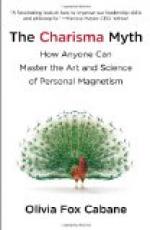These mythical ideas have their special reproduction in the mythology of the Finns. (Castren.) The god Ukko with his great bow of fire sends forth trees as darts against his enemies; while fighting, he stands erect upon a cloud, called the umbilicus of heaven. Thus we see that the process of myth is similar, even in different races.
By the primitive personification of the special fetishes whence he was evolved, the Indra of Vedic India is shepherd of the herd of heavenly kine. Vritra, a three-headed monster in the form of a serpent, steals away the herd and hides it in his cave. Indra pursues the robber, enters the cave with fury, overwhelms the monster with his thunderbolt, and leads back the kine to heaven, their milk sprinkling the earth. This myth gradually assumed in the Vedic hymns more splendid and artistic forms, and more amazing personifications. The original motive of the myth, as it has been interpreted even by Indian commentators, was the storm with all its alternations which bursts forth with more terrific violence in hot climates. The luminous clouds which bring rain are the purple kine whom a black-demon tries to steal; the fruitfulness of the earth depends on the issue of the contest, and the thunderbolt disperses the cloud, which falls on the earth in rain, while Indra, that is, the blue sky, appears in his splendour.[22]
It may be clearly seen from these examples how the specific myth was gradually developed. We have said that in addition to the myth which referred to types constructed from special and manifold suggestions, alike or analogous in extrinsic circumstances, others were formed from definite natural objects, in their relations to men and to their acquaintance with cosmic facts in those very early times. These, however, although definite, assumed anthropomorphic forms, like those which were specific. The cause of this identity of construction is to be found in the influence exerted upon them by the earlier myths. By a necessary equilibrium and spontaneous symmetry of mental creations, these were also modified by the gradual formation of contemporary images. In this way the solar myths were elaborated and developed among the Aryan peoples and other races; their aspects became much more anthropomorphic and anthropopathic in proportion as the typical myths assumed a human form.
The primitive myths of the secondary form were at first grouped round physical and external phenomena, because these were originally the most obvious to man. But the specific moral types had their origin by reaction, and by a more strictly intellectual process, and these were personified in the same way, although in this second stage they were not so numerous. Yet their appearance and creation were inevitable, since the same faculty and classifying process had to be carried out in the intellectual and moral order as in that which was extrinsic and cosmic; since the mind and consciousness and intrinsic faculty of the intelligence are identical. And when once these ultimate types were formed, the same necessity impelled their animation and personification in anthropomorphic images. Of this we have abundant instances in all the traditions of nearly all the peoples of the world.




